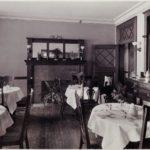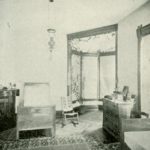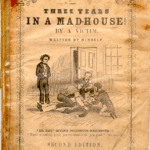Much of the commentary concerning insane asylums tends toward the negative, and rightly so, since they were often places of confinement for people who were in them unwillingly. Treatments were also much too vigorous at times, and many patients must have felt a pervasive sense of potential violence within the institution. However, early alienists desperately wanted to cure their patients and sought to create an environment in which to do it. In that respect, the physical aspects of an asylum stood in sharp contrast to the experience of all but the wealthiest patients.
During the 1800s and even decades into the 1900s, the average family lived in a small home with few conveniences. Running water, electricity, telephones, and other modern amenities may have been invented by that time, but were still unavailable to many ordinary families. Households relied on an outhouse, chamber pots, a weekly bath, and fleeting washes from a pitcher and basin for hygiene.
Women cooked on wood or coal stoves with uneven heat, spent all day doing laundry, perhaps another day ironing or baking, and the rest of their time with relentless chores that wore them out. City dwellers had access to a few more conveniences than their rural counterparts, but often could not afford to own homes. Instead, they lived in boarding houses and tenements, each of which had its own problems and deprivations.
A palatial insane asylum with beautiful landscaping presented a sharp contrast to the everyday lives of many of its patients, and it was designed and built to do just that. Early thinking concerning asylum architecture held that the patient must be taken out of his former environment completely so that old associations, habits, and acquaintances would not hinder recovery. These palaces also persuaded the public that their loved ones were in a positive environment, making it just a bit easier to leave them there.

Albert Useful Heart Family, Cheyenne River Indian Reservation, SD, 1922, courtesy National Archives in Kansas City







